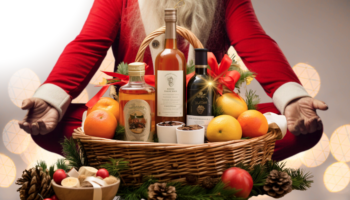The Ultimate Guide to
Salvia
(Ska pastora, Herb of the Shepherdess, Hierba de María, Magic mint, Diviner’s sage, Sally-D)
Salvinorin A is a potentially illegal substance, and we do not encourage or condone the use of this substance where it is against the law. However, we accept that illegal drug use occurs, and believe that offering responsible harm reduction information is imperative to keeping people safe. For that reason, this guide is designed to ensure the safety of those who decide to use the substance.
Overview
01The Salvia genus is a member of the tribe Mentheae and contains many varieties of sage species. As well as Salvia divinorum, other common species are Salvia officinalis, or common sage, and Salvia hispanica which produces edible Chia seeds. Many of the Salvia species are used for ornamental purposes or herbal remedies. There are about 1000 species of Salvia worldwide, but currently, only Salvia divinorum holds psychoactive properties.
Although not widely used, Salvia divinorum is a potent psychedelic characterized by unique visionary experiences. It shows great potential for treating pain and addiction, as well as depression—whether in traditional Mazatec ceremonies or more clinical, Western settings. Many people have also found it useful for personal growth.
Unscheduled by the federal US government, Salvia divinorum is controlled in many states. The most prominent advocate for its continued legality is the ethnobotanist Daniel Siebert, who maintains the Salvia divinorum Research and Information Center.
Beyond LSD and Psilocybin is a field. This guide will take you there.
In Third Wave’s Ultimate Guide to Safely Sourcing Psychedelics, you will discover an astonishing menu of psychedelic medicines…
…and how to source them without legal risk.
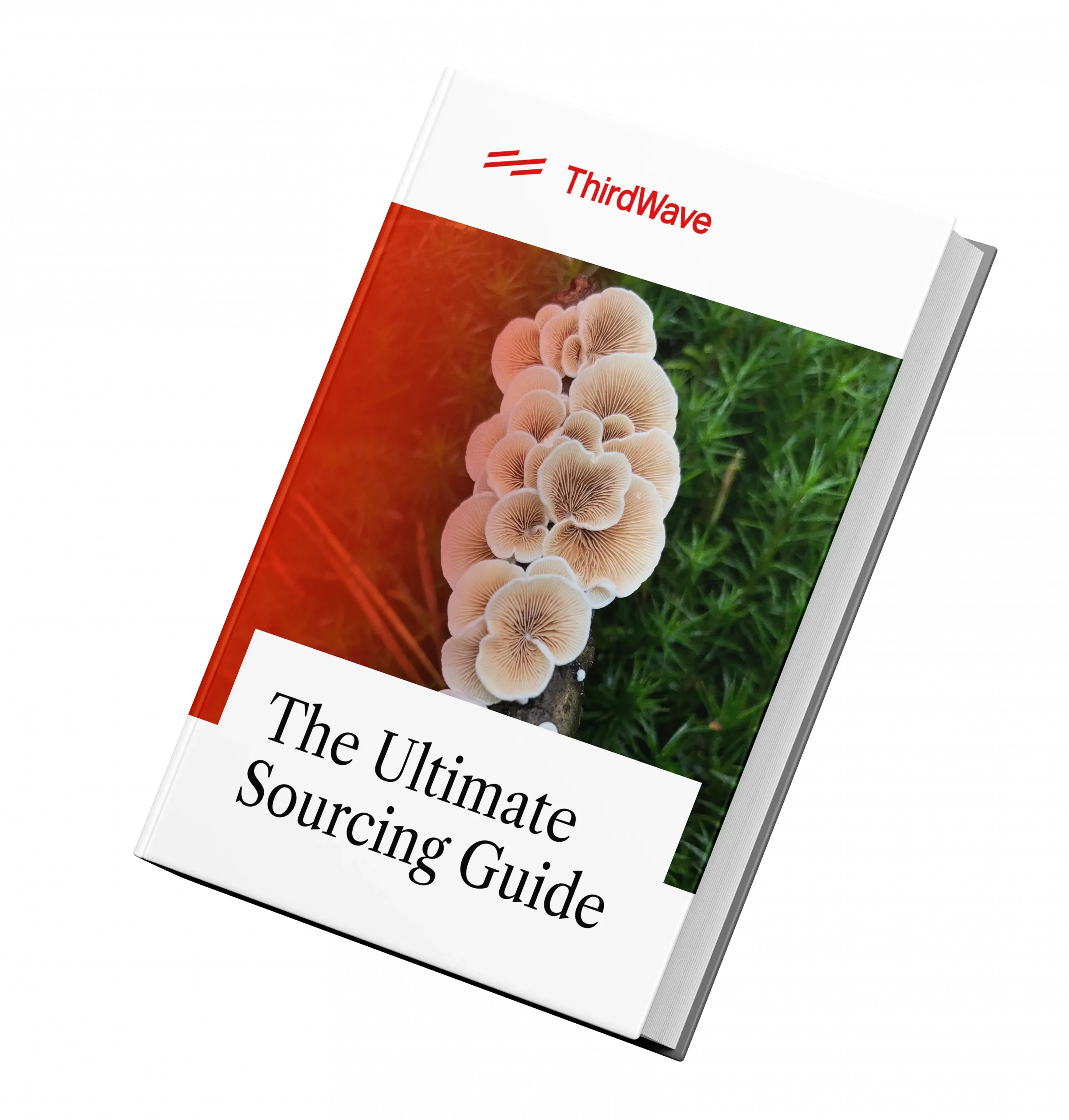
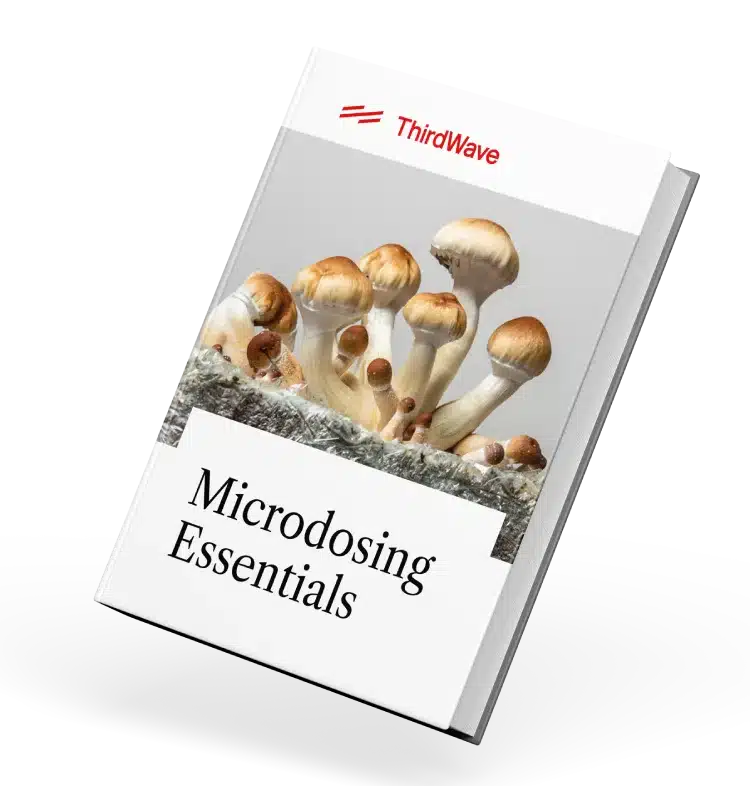
Beyond LSD and Psilocybin is a field. This guide will take you there.
In Third Wave’s Ultimate Guide to Safely Sourcing Psychedelics, you will discover an astonishing menu of psychedelic medicines…
…and how to source them without legal risk.
Experience
02Dosing & method of consumption
Salvia divinorum can be chewed, smoked, or taken as a purified tincture. A threshold dose of Salvinorin A is 200mcg, while the upper limit for most people is around 1000mcg (1mg). The amount of plant material, extract, or tincture required for a single dose will depend on the strength of the product being used.
One quarter to half a gram of dried leaf is a fairly mid-level dose for smoking. It’s important to inhale the entire dose in two to three minutes, though, due to the quick metabolization of Salvinorin A in the body. A water pipe or high-temperature vaporizer can make this easier.
Keep in mind, however, that two products of allegedly the same strength may contain very different levels of Salvinorin A.
Chewing Salvia divinorum involves rolling fresh or dried leaves (rehydrated in water) into a ball or cylinder called a “quid.” The quid is kept under the tongue and chewed once every ten seconds or so for at least half an hour before its spit out. With a quid, a mid-level dose of Salvinorin A requires about 30g of fresh leaves or 2-8g of dried leaves. The chew can be sweetened with sugar or Stevia extract to help with the bitter flavor.
What to expect
When smoking or vaporizing Salvia divinorum, the onset happens fast, peaking within the first 180 seconds and declining after 5-30 minutes. The quid chewing method takes a bit longer. You may feel nothing for the first 15-20 minutes and any effects you do feel may be diminished by light or noise. The peak effects last 30-60 minutes. Taking a purified tincture is much like quidding, but the onset is much faster.
At low doses, Salvia divinorum can cause a tingling sensation, increased awareness of the body, and enhanced clarity or presence of mind. Higher doses are associated with a loss of self-awareness, fast-changing visuals, physical impairment or dizziness, and revelatory mystical experiences. Some other, more specific effects of Salvia divinorum include tunnel vision, the sensation of merging with or becoming objects, seeing entities or beings, hearing voices, laughing uncontrollably, and experiencing overlapping realities or worlds.[1][2][3][4]
Effects
03Pharmacology
Salvinorin A, the psychoactive molecule in Salvia divinorum, is considered the most potent naturally occurring psychedelic compound. It is structurally and chemically unique from most other natural psychedelics. Typical psychedelic compounds contain nitrogen, but Salvinorin A is only made up of carbon, hydrogen, and oxygen atoms. It was the first non-nitrogenous psychedelic to be identified, as well as the first psychoactive diterpene.[5][6]
Receptor binding
Unlike the classical psychedelics, Salvinorin A shows no binding affinity for any of the serotonin (5-HT) receptors. Its mechanism of action lies in strong and highly selective bonds to the kappa-opioid receptors (or KORs). KOR agonists are known to cause hallucinations or visions, dissociation, and a sense of altered reality.[7]
Benefits & Risks
04Benefits
The Mazatec Indians of Oaxaca have long used Salvia divinorum for ceremonial purposes. In fact, it is revered as an incarnation of the Virgin Mary, and is traditionally used for healing and divination. In the Western world, more people are beginning to use this substance to treat depression, enhance their meditation practice, and connect to their spirituality.
Though there isn’t much research into the therapeutic effects of Salvia divinorum compared to other, more common psychedelics, there is some evidence that shows the compound could prove useful in treating addiction and pain, as well as understanding schizophrenia and Alzheimer’s.
Risks
Research on the safety of Salvia divinorum is limited, but a 2003 study found pure Salvinorin A to be of “relatively low” toxicity to rodents, even at doses of up to 6400mcg—more than three times the highest known human dose and six times the maximum recommended dose. In this study, the rodents were also continually given the drug during a two-week period, which is not common for people. However, even with this chronic use, the researchers found no adverse effects. In humans, a toxic overdose is very unlikely.[8]
In 2013, another set of researchers administered various doses of Salvinorin A to human participants and found no evidence of adverse effects one month later.[9] There is also no evidence that Salvia divinorum is addictive.[10]
Due to the disorienting effects of Salvia divinorum, it is strongly advised to have a sitter present when taking it. This is particularly important for first-time users and anyone experimenting with higher doses or more effective methods of administration (e.g. vaporizing). It’s also a good idea to lie down during the trip. Sharp objects and other hazardous items should be removed from the area.
Grow 1 Year's Worth of Microdoses in Just 6 Weeks
Third Wave partnered with top mycologists to create the world’s easiest and best mushroom growing program (kit, course, and expert support).
- Pre-sterilized and sealed
(ready to use out of the box) - Step-by-step video and text course
- Access to growing expert in community
- Make your first harvest in 4-6 weeks
- Average yield is 1 - 4 ounces (28-108g)
- Fits in a drawer or closet
- Enter info for Third Wave discounts:
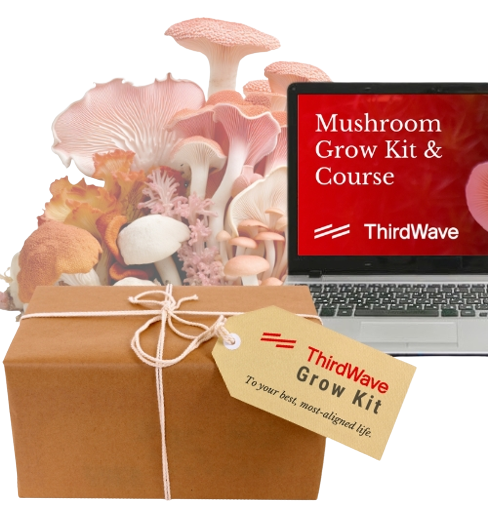
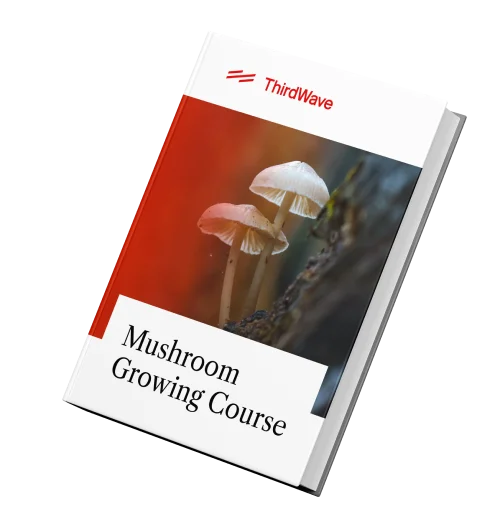
Grow 1 Year's Worth of Microdoses in Just 6 Weeks
Third Wave partnered with top mycologists to create the world’s easiest and best mushroom growing program (kit, course, and expert support).
- Pre-sterilized and sealed
(ready to use out of the box) - Step-by-step video and text course
- Access to experts in community
- Make your first harvest in 4-6 weeks
- Average yield is 1 - 4 ounces (28-108g)
- Fits in a drawer or closet
- Enter info for Third Wave discounts
Therapeutic Use
05High doses of vaporized Salvinorin A have also been shown to decrease interoception, or our awareness of an emotional response to our body, which could sever the pleasure-seeking mechanism that leads to addiction. [12] This also makes Salvinorin A a powerful painkiller, and one without the respiratory complications of more conventional anesthetics. While studies on mice have shown the pain-relieving effects of Salvinorin A to be short-lived, the molecule has been used to develop longer-lasting analogs.[13][14][15] Anecdotal reports support the of Salvia for treating headaches and arthritis pain.[16]
Salvia divinorum also shows promise in the treatment of depression, enhancing mood, relaxation, and self-awareness.[17][18] One 26-year-old woman who suffered from treatment-resistant depression since adolescence reported total remission through regular Salvia use. Specifically, she chewed 2-3 leaves (0.5-0.75g) three times a week. After six months, her depression was still in remission without any signs of relapse.[19]
Other potential therapeutic uses of Salvia include treating cancer and potentially even HIV/AIDS.[20]
Personal Growth
06In the Mazatec tradition, Salvia divinorum has been used as a tool for “divination.” By taking Salvia with a question in mind, it’s believed that people are able to re-frame stubborn interpersonal issues and other life concerns.
The plant also reportedly enhances people’s meditation practices, regardless of the spiritual tradition being followed. In a preliminary, self-reporting study conducted by MAPS, Salvia was found to clear the mind and eliminate distracting thoughts. The optimal dosage for nearly all participants was one gram of raw leaf chewed. Any more than that was found to be too powerful for meditation.
Microdosing
07There have been no studies on the efficacy or safety of salvia microdosing, but anecdotal reports suggest that the practice has been beneficial. One case study found that a 26-year-old woman with treatment-resistant depression found relief by microdosing salvia, while another user reported that it helped “improve mood and stave off anxiety and depression.” Still another user found that a salvia microdose put them “into a very meditative state for the first hour,” followed by “more purpose and clarity the rest of the day with a very nice sense of fulfillment and satisfaction.” They also noted that the small dose also had “anti-depressant qualities.”
Beyond LSD and Psilocybin is a field. This guide will take you there.
In Third Wave’s Ultimate Guide to Safely Sourcing Psychedelics, you will discover an astonishing menu of psychedelic medicines…
…and how to source them without legal risk.


Beyond LSD and Psilocybin is a field. This guide will take you there.
In Third Wave’s Ultimate Guide to Safely Sourcing Psychedelics, you will discover an astonishing menu of psychedelic medicines…
…and how to source them without legal risk.
Legality
08In Canada, Salvia divinorum is illegal to sell but not to possess. In the UK, though not specifically targeted, Salvia was criminalized in 2016 as part of the wide-ranging Psychoactive Substances Act.
Getting started with psychedelics and finding consistent legal access is a challenge. That’s why we built an online community of trusted providers ranging from therapists, to clinics, to retreats. We hope you find what you’re looking for.
The first country to ban Salvia divinorum outright was Australia, which designated the plant as Schedule 9, the most strictly controlled, in 2002. In New Zealand, it is illegal to import or sell Salvia without a license.
History & Stats
09Brief history
Salvia divinorum has a long history of use among the Mazatec Indians of Oaxaca, who revere the plant as an incarnation of the Virgin Mary, which has led it to be known locally as hierba (herb) or hojas (leaves) de María. Traditionally used for healing and divination, Salvia is also the first of three sacred plants that apprentice curanderos (or shamans) come into contact with, followed by morning glory seeds and psilocybin mushrooms.[24]
Salvia divinorum first came to the attention of Western anthropologists between the late 1930s and early 1950s. The ethnomycologist R. Gordon Wasson sampled it in the 1960s, along with Albert Hofmann, who first synthesized LSD, and his wife Anita. They infused the Salvia leaves in water and reported colorful visions and patterns. Although the plant’s growing locations were kept a closely guarded secret, Wasson also managed to acquire a live specimen from the Mazatec.[25] This was sent to the US in December 1962, where it was identified as a new species of Salvia: Salvia divinorum. Other live specimens were collected by the psychiatrist and ecologist Sterling Bunnell in the same year. Known as the Bunnell strain, this remains the most widely cultivated and commercially available Salvia strain today.
By 1975, Salvia was being smoked by non-Mazatec youths in Mexico City, despite the traditional belief that it became inactive when dried.[26]
The psychoactive compound Salvinorin A was isolated in 1982, but it was another twenty years before researchers identified its precise mechanism of action. By this time, Salvia divinorum had already become commercially available in the US, and public awareness was growing, thanks in part to the annual “Ska Pastora – Leaves of the Shepherdess” conference. Early speakers at this Salvia-devoted conference included a host of ethnobotanists, chemists, pharmacologists, and psychopharmacologists such as Ann and Sasha Shulgin, Jonathan Ott, Dale Pendell, Ralph Metzner, and Daniel Siebert.
Salvia’s increased visibility also drew the attention of legislators and a hostile media. In 2005, Louisiana became the first state to ban the plant for human consumption.
Current usage
Between 2006 and 2008, the National Survey on Drug Use and Health (NSDUH) recorded an 83% increase (from 0.7% to 1.3%) in lifetime prevalence of Salvia divinorum use.[27] In 2015, a nationally representative sample of college students found that Salvia use had fallen from an annual prevalence of 5.8% in 2009 to 1.8% in 2014.[28] However, the 2008 NSDUH recorded a higher prevalence of Salvia use among people from lower-income families, a group presumably underrepresented in colleges.[29] The majority of Salvia users are white, male, between the years of 18-25, and reside in cities.
Myths
10“Salvia is a legal cannabis alternative”
Salvia divinorum is often mistakenly referred to as a legal substitute for cannabis—probably because it’s green, dried, and typically smoked. But the similarities end there—salvia is chemically and subjectively unique and is nothing like cannabis. In fact, it has little in common with any other psychoactive substance.
While Salvinorin A isn’t dangerous in itself, high doses of substance should be treated carefully. Anyone expecting a “legal” (implying weak) cannabis high will be caught off guard by the experience of this potent psychedelic, which could lead to avoidable, dangerous situations.[30]
“Salvia leads to violent behavior”
Many news reports have linked suicides and murders to Salvia divinorum, in some cases prompting legislators to criminalize the plant, but there is no evidence to support such a direct link. In fact, high doses make coordinated acts of violence virtually impossible. In the longer term, other factors, such as underlying depression, are typically far more likely to blame.[31]
Nevertheless, as with any psychoactive substance, caution is advised. Salvia should be used with care, especially by people with a history of mental health issues or aggressive behavior. Adhere to the 6Ss of psychedelic use to minimize any risks and maximize potential benefits.
FAQ
11Can it be detected in a drug test?
Neither standard nor extended drug tests can detect Salvinorin A.[32] Given the compound’s uniqueness among psychoactive drugs, it’s also unlikely to cause a false positive.[33]
Can Salvia divinorum cause psychological trauma?
Although the research in this area is limited, there is no evidence of long-term adverse mental health effects arising from Salvia divinorum use. At high doses, it is common to lose one’s sense of self and consensus reality. But this effect is temporary and a reliable sitter can provide reassurance in case of a bad trip.
The best way to avoid negative experiences is to consider the 6Ss of psychedelic use and prepare yourself appropriately.
Are there risks?
Salvia divinorum appears to be safe both physiologically and psychologically. As with tobacco and cannabis, Salvia smoke gives off carcinogens — but the same is true of almost all combustible matter. Other risks, such as falling over objects, can be avoided by having a sitter present.
Salvia divinorum is a powerful psychedelic, and as such, there is a risk of an intense or traumatic experience. To minimize these risks, become familiar with the 6Ss of psychedelic use.
Is it legal to grow at home?
In many states where Salvia divinorum is illegal to possess or distribute, it remains legal to grow for aesthetic or decorative purposes.
Some states, like Illinois, have banned the plant outright—including all seeds, derivatives, and preparations.
Despite growing naturally in a tropical climate, Salvia can be grown indoors for aesthetic purposes.
What is the best way to take Salvia divinorum?
There are pros and cons to every method. Some people may find chewing the plant unpleasant due to the bitter taste and amount of plant material required. On the other hand, the effects of this method are more mellow and long-lasting.
Smoking is quicker and more efficient but may lead to discomfort in the chest. It can also be difficult to accurately gauge the dose when using extract-enhanced leaves.
For a more in-depth guide on the practicalities of Salvia divinorum use, see here.
Does it produce tolerance?
Salvia does not produce a tolerance effect. Since Salvinorin A inhibits dopamine release, it also has little potential for addiction.
Can I mix it with other drugs?
Not much is known about Salvia’s interaction with other drugs, so caution is advised. While many people take regular medications alongside Salvia without problems, it is recommended to start out with a small dose and monitor reactions.
Click here for a detailed chart of safe drug combinations.
Footnotes
12[1] Turner, D. M. (1996). Salvinorin: The Psychedelic Essence of Salvia Divinorum. Panther Press.
[2] Pendell, D. (1995). Pharmako/poeia. San Francisco: Mercury House.
[3] Maqueda, A. E. et al. (2015). Salvinorin-A Induces Intense Dissociative Effects, Blocking External Sensory Perception and Modulating Interoception and Sense of Body Ownership in Humans. The International Journal of Neuropsychopharmacology, 18(12).
[4] Addy, P. H., Garcia-Romeu, A., Metzger, M., Wade, J. (2015). The subjective experience of acute, experimentally-induced Salvia divinorum inebriation. Journal of Psychopharmacology, 29(4), 426-35.
[5] Vortherms, T. A., Roth, B. L. (2006). Salvinorin A: From Natural Product to Human Therapeutics. Molecular Interventions, 6(5), 257-265.
[6] Rätsch, C. (2005). The Encyclopedia of Psychoactive Plants. Rochester, VT: Park Street Press.
[7] Roth, B. L. et al. (2002). Salvinorin A: A potent naturally occurring nonnitrogenous κ opioid selective agonist. Proceedings of the National Academy of Sciences of the United States of America, 99(18), 11934-11939.
[8] Mowry, M., Mosher, M., Briner, W. (2003). Acute physiologic and chronic histologic changes in rats and mice exposed to the unique hallucinogen salvinorin A. Journal of Psychoactive Drugs, 35(3), 379-382.
[9] MacLean, K. A., Johnson, M. W., Reissig C. J., Prisinzano T.E., Griffiths R.R. (2013). Dose-related effects of salvinorin A in humans: dissociative, hallucinogenic, and memory effects. Psychopharmacology (Berl), 226(2), 381-92.
[10] CESAR. (2013). Salvia Divinorum.
[11] Morani, A. S., Kivell, B., Prisinzano, T. E., Schenk, S. (2009). Effect of kappa-opioid receptor agonists U69593, U50488H, spiradoline and salvinorin A on cocaine-induced drug-seeking in rats. Pharmacology, Biochemistry, and Behavior, 94(2), 244-9.
[12] Addy, P. H., Maqueda, A. E. (2015). Traditional Medicine from Southern Mexico Offers Help with Addiction.
[13] McCurdy, C. R., Sufka, K. J., Smith, G. H., Warnick, J. E., Nieto, M. J. (2006). Antinociceptive profile of salvinorin A, a structurally unique kappa opioid receptor agonist. Pharmacology, Biochemistry, and Behavior, 83(1), 109-13.
[14] White, K. L. et al. (2015). The G protein-biased κ-opioid receptor agonist RB-64 is analgesic with a unique spectrum of activities in vivo. The Journal of Pharmacology and Experimental Therapeutics, 352(1), 98-109.
[15] Salaga, M. et al. (2015). Salvinorin A analogues PR-37 and PR-38 attenuate compound 48/80-induced itch responses in mice. British Journal of Pharmacology, 172(17), 4331-4341.
[16] Siebert, D. J. A Prominent Salvia Divinorum Researcher Speaks Out: Letter to Congress.
[17] Zarate, Jr., C. A., Manji, H. K. (2008). Putative Drugs and Targets for Bipolar Disorder. Mount Sinai Journal of Medicine, 75(3), 226-247.
[18] Hanes, K. R. Salvia divinorum: Clinical and Research Potential.
[19] Hanes, K. R. (2001). Antidepressant Effects of the Herb Salvia Divinorum: A Case Report. Journal of Clinical Pharmacology, 21(6), 634-635.
[20] Martinho, A., Silva, S. M., Gallardo, E. (2015). Cytotoxic Effects of Salvinorin A, A Major Constituent of Salvia divinorum. Medicinal Chemistry, 12(5), 432-40.
[21] Stiefel, K. M., Merrifield, A., Holcombe, A. O. (2014). The claustrum’s proposed role in consciousness is supported by the effect and target localization of Salvia divinorum. Frontiers in Integrative Neuroscience, 8, 20.
[22] Beifuss, W. (1999). Daniel Siebert Speaks… The Entheogen Review, 8(3).
[23] Khey, D. N., Miller, B. L., Griffin, O. H. (2008). Salvia divinorum Use Among a College Student Sample. Journal of Drug Education, 38(3), 297-306.
[24] Valdes III, L. J., Diaz, J. L., Paul, A. G. (1983). Ethnopharmacology of Ska Maria Pastora (Salvia Divinorum, Epling and Jativa-M.). Journal of Ethnopharmacology, 7, 287-312.
[25] Wasson, R. G. (1962). A New Mexican Psychotropic Drug from the Mint Family. Harvard University Botanical Museum Leaflets.
[26] Ott, J. (1996). Pharmacotheon (2nd ed.). Kennewick, WA: Natural Products Co.
[27] Wu, L., Woody, G. E., Yang, C., Li, J., Blazer, D. G. (2011). Recent national trends in Salvia divinorum use and substance-use disorders among recent and former Salvia divinorum users compared with nonusers. Substance Abuse and Rehabilitation, 2, 53-68.
[28] Wadley, J. (2015). Daily marijuana use among U.S. college students highest since 1980.
[29] Perron, B. E. et al. (2011). Use of Salvia divinorum in a Nationally Representative Sample. The American Journal of Drug and Alcohol Abuse, Early Online, 1-6.
[30] Rosenbaum, C. D., Carreiro, S. P., Babu, K. M. (2012). Here Today, Gone Tomorrow…and Back Again? A Review of Herbal Marijuana Alternatives (K2, Spice), Synthetic Cathinones (Bath Salts), Kratom, Salvia divinorum, Methoxetamine, and Piperazines. Journal of Medical Toxicology, 8(1), 15-32.
[31] Sullum, J. (2009). The Salvia Ban Wagon.
[32] Erowid. (2015). Salvia divinorum — Drug Testing.
[33] Sage Student, Siebert, D. (2012). The Salvia divinorum FAQ.
Beyond LSD and Psilocybin is a field. This guide will take you there.
In Third Wave’s Ultimate Guide to Safely Sourcing Psychedelics, you will discover an astonishing menu of psychedelic medicines…
…and how to source them without legal risk.


Beyond LSD and Psilocybin is a field. This guide will take you there.
In Third Wave’s Ultimate Guide to Safely Sourcing Psychedelics, you will discover an astonishing menu of psychedelic medicines…
…and how to source them without legal risk.
